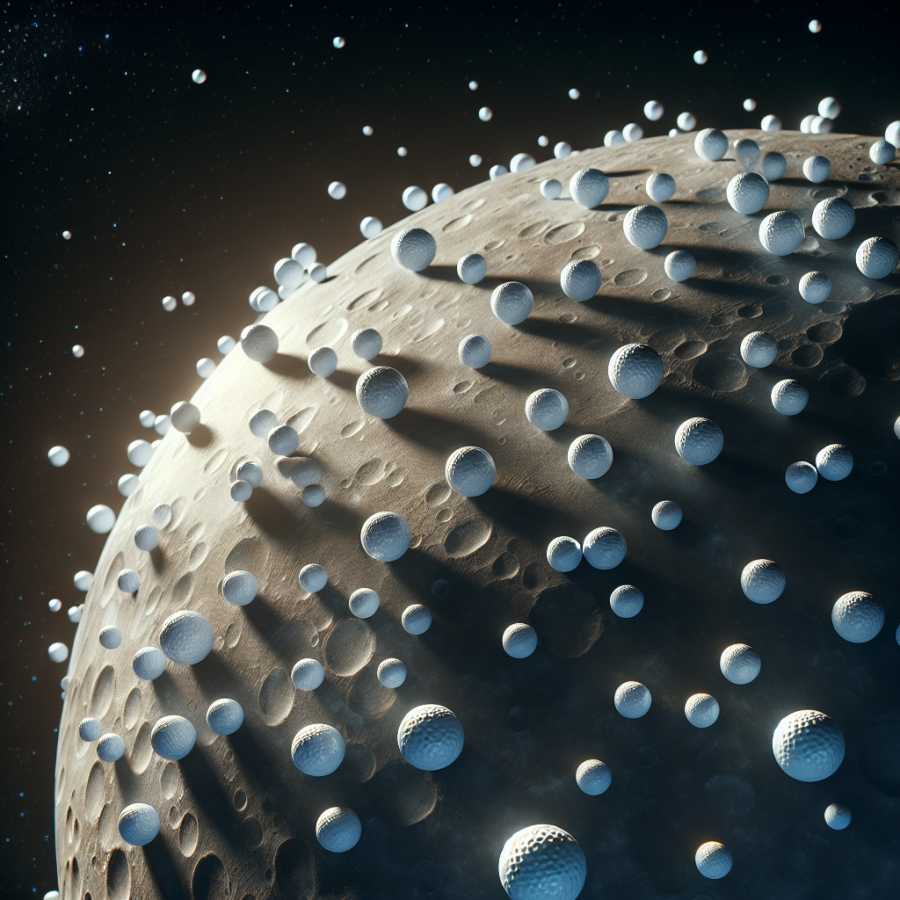Unmasking the Facts: How Did Golf Balls End Up on the Moon?
The science of golf and the fascinating intrigue of space exploration intertwine in the fascinating anecdote of the golf balls on the moon. But the question that begs elucidation is: how exactly did those golf balls end up there? Let's delve into the unmasking of the facts.
It all began during the era of the Apollo missions, when NASA, the world's leading space agency, decided to send men to explore the moon. Apollo 14, which launched on January 31, 1971, was the third mission to land humans—Alan Shepard and Edgar Mitchell—on the lunar surface. This mission was famous, not only for its scientific endeavors but also for something that until this day causes intrigue - golf on the moon.
Alan Shepard, known for being the first American to travel to space, was also the first, and so far the only person to play golf on the moon. But why? Because of his sheer passion for the sport and his craving to perform something unique that was previously unthinkable!
Shepard had smuggled a six-iron club head (which he had modified to attach to the handle of a lunar soil collection device) and two golf balls on board the Apollo 14 mission. He did this without NASA's prior knowledge. After Shepard and Mitchell had completed their primary mission tasks, Shepard attached the club head to the handle of a lunar excavation tool, thereby transforming it into an improvised golf club.
Once the makeshift club was prepared, Shepard performed what would come to be known as the “lunar golf shots.” Despite his bulky space suit and the restrictive nature of the lunar surface, Shepard managed to hit both balls, forever marking this unique event in lunar and golf history. Shepard famously exclaimed after his first swing, "Miles and miles and miles," to describe the distance the ball may have flown in the moon's lower gravity and lack of atmospheric resistance.
While the actual number of moon golf balls remains a topic of debate, it is evident that at least two golf balls were struck on the lunar surface by Shepard, each of them tossed with a one-handed swing of the club. Notably, while the first ball ended up in a lunar crater, the second ball sailed over the television camera's field of view, according to NASA history.
Shepard’s "moon golf" moment has not only intrigued us for decades but has also encapsulated the spirit of human exploration and ambition, reflecting our constant craving to push beyond boundaries.
Analyzing the Numbers: Counting the Golf Balls on the Lunar Surface
The mystery behind the number of golf balls on the moon has always been intriguing. Various sources hint towards several golf balls being hit by astronauts during the Apollo missions, and debates still continue about the exact number. It's time to analyze the numbers and get down to the crux of the matter.
In 1971, during the Apollo 14 mission, astronaut Alan Shepard famously hit two golf balls on the lunar surface. Though his swing might not have been as strong due to the bulky spacesuit, the moon's lower gravity boosted the balls' flight. The anecdotal evidence suggests that Shepard hit the first ball, which only travelled a few yards due to poor contact. The second ball was struck with a more potent one-handed swipe and was claimed to have flown for miles.
While this evidence shows at least two golf balls were left on the moon's surface, there are many theories and assumptions that argue for a larger number. There is a popular story that some astronauts, aware of Shepard's intend to golf on the moon, smuggled extra balls aboard the landing module. But without any substantial evidence or testimonies from the astronauts themselves, these stories largely remain as folklore.
Some critics argue that years of meteor impact cratering and lunar dust migration could've buried the golf balls deep under the lunar surface. These organic and inorganic processes can move lunar dust over time - a phenomenon known as lunar gardening. If this were the case, even if there were more than two golf balls initially, finding them today could be a considerable challenge.
The size and visual signature of a golf ball add another hurdle to the count. According to a study published in the Journal of Lunar Studies, even the expertly trained eye of a lunar geologist would struggle to spot a golf ball on the moon's surface from orbital photos or from lander and rover images. The conditions on the moon - the lack of atmospheric perspective, the strange play of light and shadow, and the appearance of foreign objects in the lunar landscape - make these tasks daunting.
Another facet to consider is the decay and degradation of the golf balls over time. The harsh lunar conditions, marked by extreme temperature shifts and high radiation levels, could have caused the balls to deteriorate or change color, making them even harder to spot.
Performing the actual counting is another complex task. The mathematical model for counting the balls from satellite images requires high-resolution imaging and sophisticated software algorithms.




